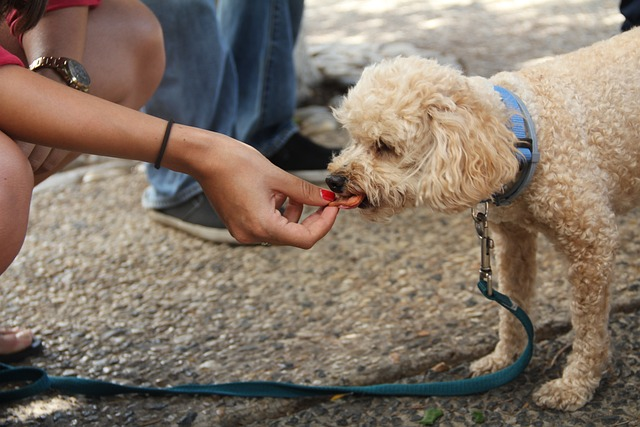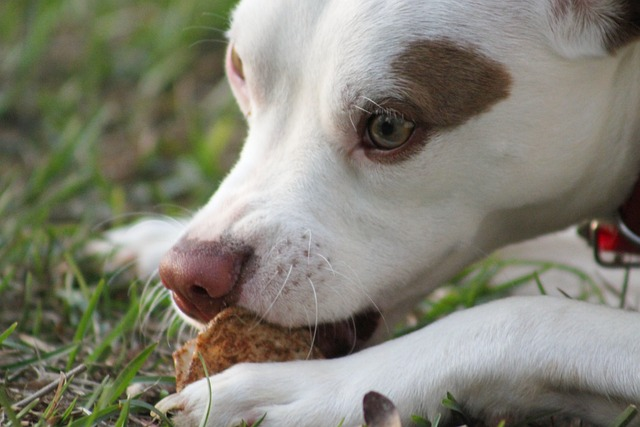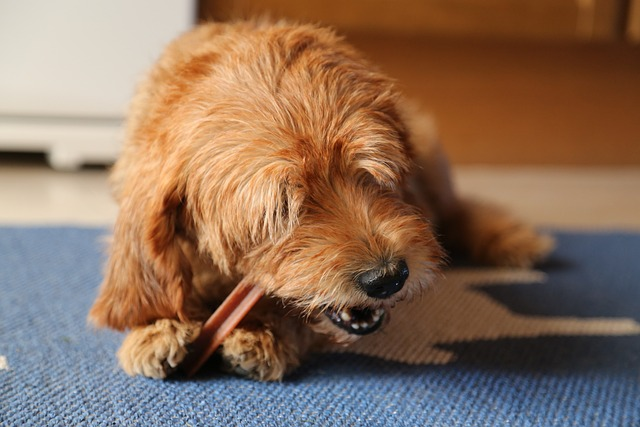
Are you sick and tired of your shoes and other valuables being chewed up by your furry friend? Are you looking into alternatives that are safe to chew for your dog and that have some benefits?
Look no more, because today we'll talk about two types of treats that satisfy your dog's chewing instincts.
In this post, we will discuss Yak chews and bully sticks and briefly overview their pros and cons. We will look into their main components and give a general overview so that you can make an informed decision for your dog.
So, put your feet up, and let us tell you all about the two competing chewy treats of the season.
Yak Chews

Yak chews are treats made from yak's milk. These have been around for a very long time. They were first made by yak herders in Nepal. They needed a way to get lots of protein, so they started making chews from yak's milk.
Now you must be wondering, are yak chews safe for dogs? Yes, they are.
Nowadays, these yak chews are also given to dogs as healthy treats. People like them because they don't have any artificial additives.
Ingredients and process
The process of making yak chews is pretty simple – you just need yak milk and cow milk. To create these yak chews, mix the two milks and heat them up. After that, let it sit out for a few weeks until it becomes hard, kind of like cheese.
Taste, Smell & Color
Dogs really enjoy chewing on these treats, and the chews also help keep their teeth healthy. In terms of taste, these chews have a rich and savory flavor with a bit of saltiness and tanginess, which comes from how they're dried.
The best part is that these chews don't have a strong smell that might bother people or dogs. This is a good thing for pet owners and dogs who are sensitive to smells.
Moreover, they come in different colors, ranging from light yellow to dark yellow. These color differences might be because of the milk used or how they're dried.
Because they're dried for so long, yak chews last long, making them a satisfying and durable dog treat. They can stay good for up to two years if you store them right.
Best of all, yak chews are suitable for dogs of all ages, including puppies. They can help puppies when they're teething develop strong dog teeth.
Pros
Let's look into the pros of these popular Himalayan dog chews:
-
Natural and Healthy
These chews are entirely natural and don't contain any extra stuff like chemicals or preservatives. This makes them a safe choice, especially for dogs with food allergies or sensitivities.
-
Full of Good Stuff
Yak chews are packed with protein but don't have a lot of fat, which helps dogs stay fit and healthy.
When dogs munch on these chews, they get the essential nutrients their bodies need without adding extra fat that can make them gain weight. This keeps them at a healthy weight. Your furry friend feels strong and happy.
-
Good for dental health
Chewing on these treats can actually help clean a dog's teeth. They work by scraping off the gunk-like plaque and tartar, which lowers the chances of dental problems such as gum disease and cavities.
Chewing these is like giving dogs a natural toothbrush they can enjoy while having fun. It's like giving their teeth a good cleaning and keeping their mouths in good shape.
Cons
Now let's look into the cons of yak chews:
-
No VOHC Approval
Yak chews haven't been given the thumbs-up by the Veterinary Oral Health Council (VOHC). This organization checks if dental products are good for pets. This might worry people who want natural dog chews that are proven to be good for their pet's teeth.
-
Tummy Problems
If your dog eats Yak chews too quickly or eats a lot of them, it could make their stomach feel funny or even give them serious tummy issues. So, just remember to give these chews in moderation!
Bully Sticks

Bully sticks or bull sticks are a type of dog treat made from the pizzle, which is the penis of a bull. They are often dried and can be sold in various shapes and sizes, such as sticks or braids.
Bully sticks are a natural dog chew. These are long-lasting and protein-rich treats for dogs. They are made to provide dogs with a satisfying chewing experience. Plus, these help clean their teeth and keep them busy and occupied.
How they are made?
Here is how bully sticks are made:
-
Sourcing the Raw Material
The raw product for bully sticks, which is the bull penis, is obtained from slaughterhouses. These slaughterhouses collaborate with bully stick manufacturers to utilize beef byproducts to limit waste.
-
Cleaning the Raw Material
The cleaning process involves two stages:
Firstly, excess fat is trimmed off, and a cut is made down the center of the raw bully stick to release any remaining fluids, such as blood and urine. Then, the raw bully sticks are washed in clean water for several hours to further remove any residues.
-
Cooking the Bully Sticks
Bully sticks are then cooked in large ovens and hung vertically using hooks to maintain their shape. They are cooked at a low temperature of around 165-195 degrees Fahrenheit for several days to remove moisture, resulting in a hard and long-lasting chew.
-
Cutting the Bully Sticks
After cooking, the bully sticks are cut down to the desired size, typically 6" or 12", using a bandsaw due to their hardness.
-
Sorting and Quality Control
Sorting is essential because bully sticks naturally come in different lengths and thicknesses. So, after they're cooked, they're carefully weighed and organized to make sure they're all the same thickness and meet specific standards. This makes sure the bully sticks are all the same and good for your dog.
Appearance and smell
Bully sticks are like brownish-red sticks. They have a special smell that most dogs really like, which gets stronger when the stick gets wet when your dog chews on it.
Even though humans might not find this smell pleasant, our dogs absolutely love it. So, to your dog, bully sticks are like a tasty treat with an amazing smell they can't resist.
Pros
Now let's take a look at the pros:
-
Easy on the Tummy
Unlike some dog chews that can upset your dog's stomach, bully sticks are gentle because they're made from beef muscle, which your dog's body can easily handle.
-
Natural and Healthy
Many dog treats have chemicals and fake stuff that aren't good for your pup. But bully sticks are natural and healthy. They're just beef, loaded with protein and amino acids, keeping your dog full until their next meal.
-
Dental Health Boost
Besides brushing your dog's teeth, letting them chew on a bully stick can help their teeth. Chewing scrapes off yucky stuff from their teeth, which means happier gums and teeth.
-
Hard to Break
Some dog chews can break into sharp pieces that might hurt your dog if swallowed. But bully sticks are strong and less likely to break, making them safer. (Still, keep an eye on your dog when they're chewing.)
-
Good for Training
If your dog needs behavior training, bully sticks can be helpful. They are also really good distractions, as your dog will happily chew a bully stick instead of chewing your stuff.
Cons
These bully sticks do come with some cons:
-
Extra Calories
Bully sticks are calorie-dense treats, so if given too much, they can contribute to weight gain in dogs. It's essential to consider your dog's overall diet and calorie intake when giving them bully sticks.
-
Smell
Bully sticks have a strong natural odor, which some people may find unpleasant. The smell can become more prominent when the stick is chewed and becomes wet by a dog's saliva.
-
Digestive Issues
While bully sticks are generally easily digestible, some dogs with sensitive stomachs can experience problems, such as diarrhea or vomiting, after consuming bully sticks. Introduce them gradually and monitor your dog for any adverse reactions.
-
Sourcing and Quality
The quality of bully sticks can vary from brand to brand. Some may not be sourced or processed with the same level of quality control, which could impact their safety and overall quality.
Which One Should You Give Your Dog?

Now, this brings us to the real question, yak chews vs bully sticks. Which is better?
At the end of the day, the choice between bully sticks and yak chews comes down to what your dog likes.
When deciding, think about your dog's size, age, how they chew, and any specific dietary issues. It's smart to slowly introduce both treats to see which one your dog likes and handles better.
Always keep an eye on your dog while they're enjoying these chews to ensure their safety.
Final Words!

So, when it comes to treating your pup, the choice between yak chews and bully sticks is essential. The Himalayan dog chews or yak chews are natural, last long, and are great for dogs who love to chew. Bully sticks are rich in protein and contain good calorie content if that's something you are looking for.
But here's the thing: At the end of the day, it really depends on your furry friend. Think about their size, age, and what's good for their tummy. It's best to try both and see what they like best. Just a gentle reminder: try to give your dogs raw bones instead of cooked bones. Cooked bones can easily splinter and can become a choking hazard.
FAQ
Are bully sticks safe for puppies?
There are some misconceptions about bully sticks not being okay for puppies, but they are completely okay for them.
They can only be a problem if you choose the wrong size for your dog. If a big dog tries to chew on a tiny treat, it might accidentally swallow it.
Can yak chews trigger allergies in dogs?
Yes, some dogs can get allergic reactions from yak chews. These allergies might show up as things like itchy skin, tummy problems, or swelling.



















